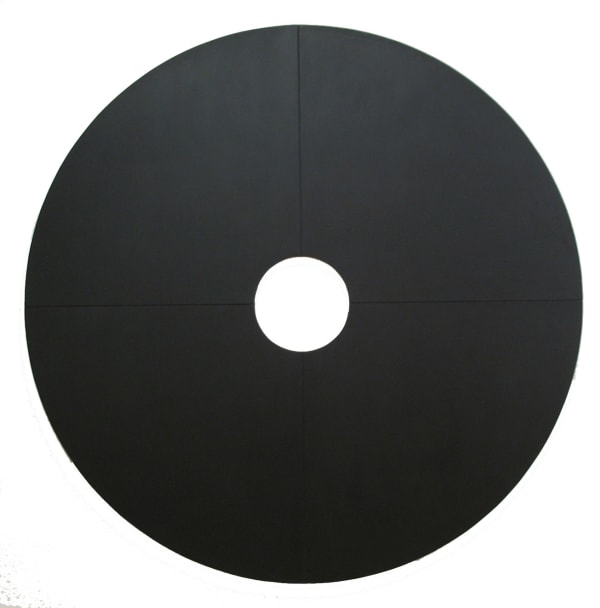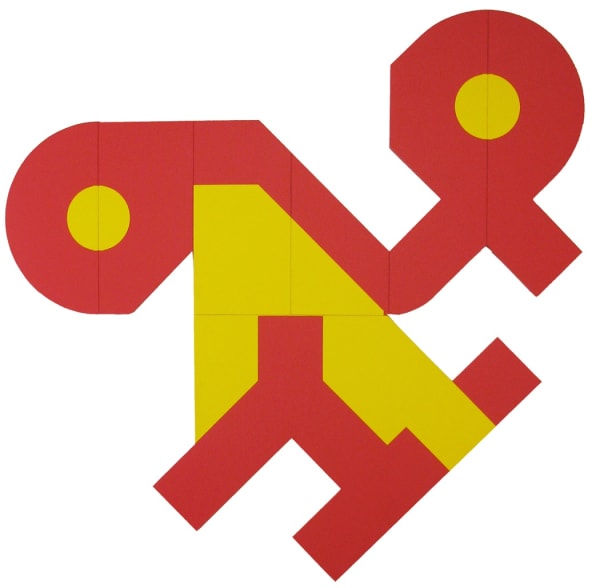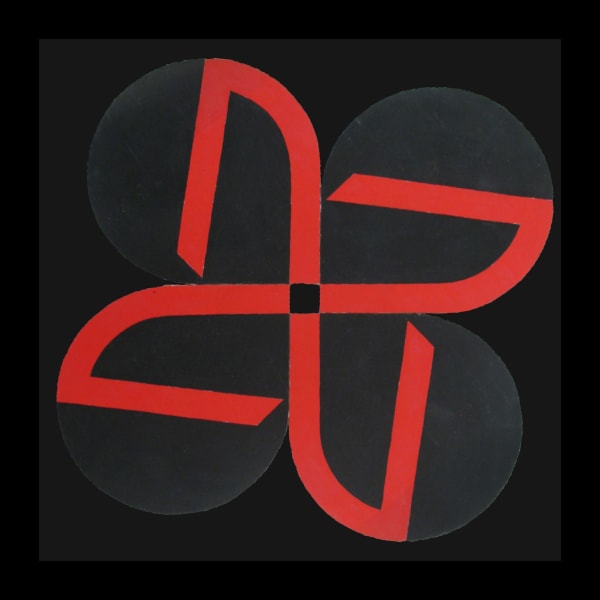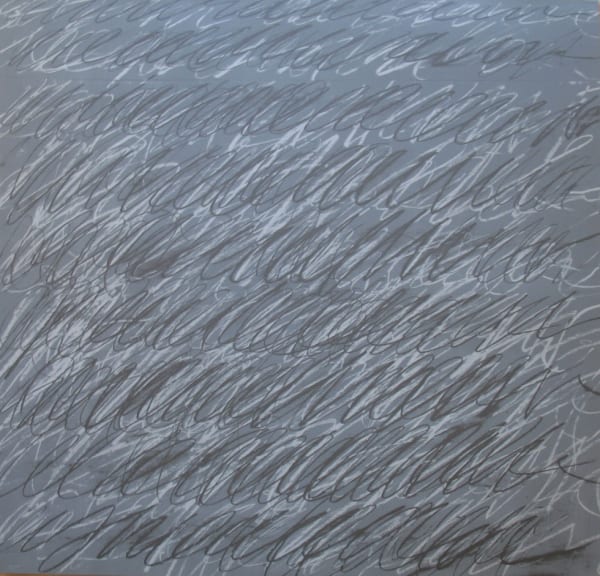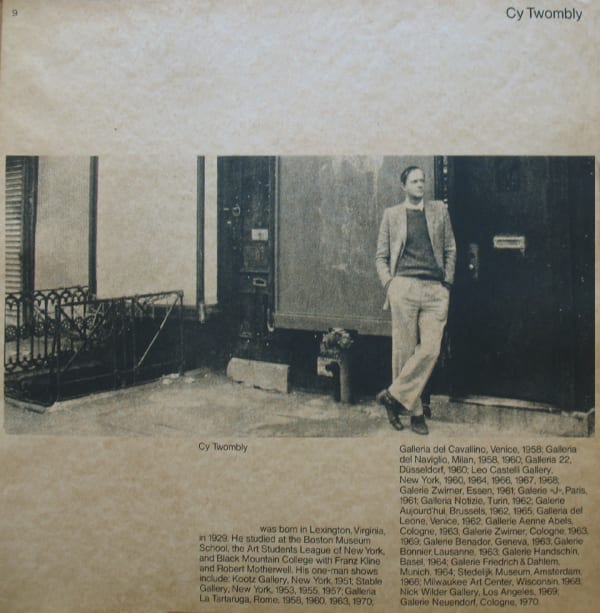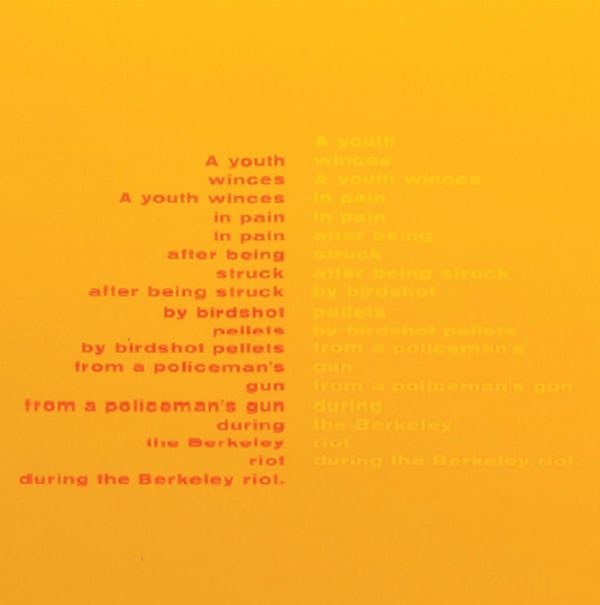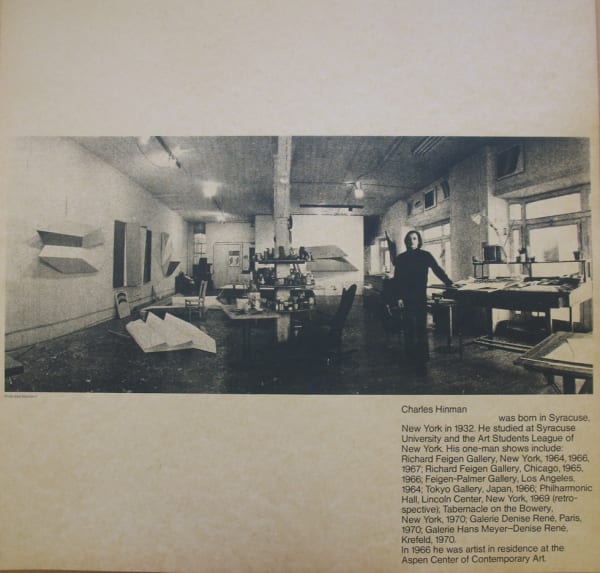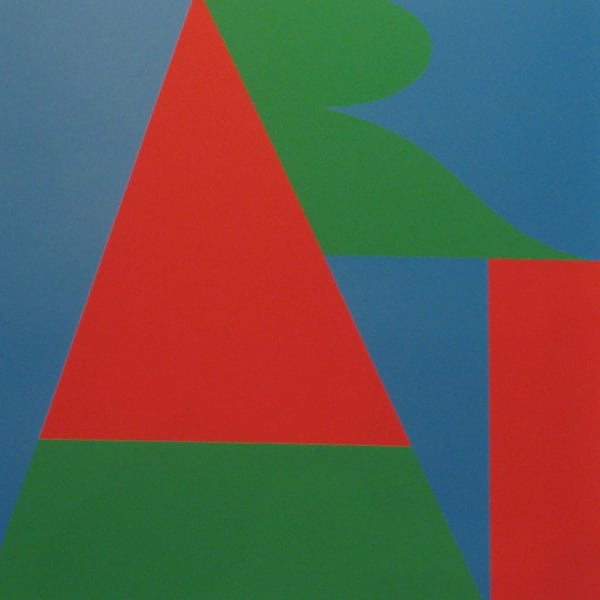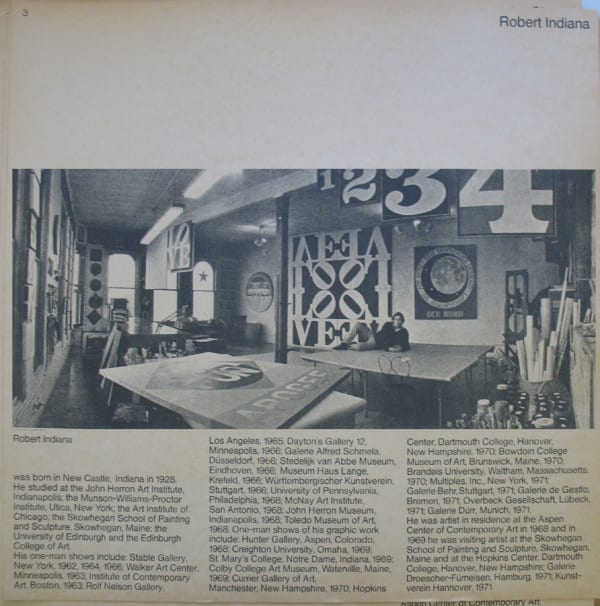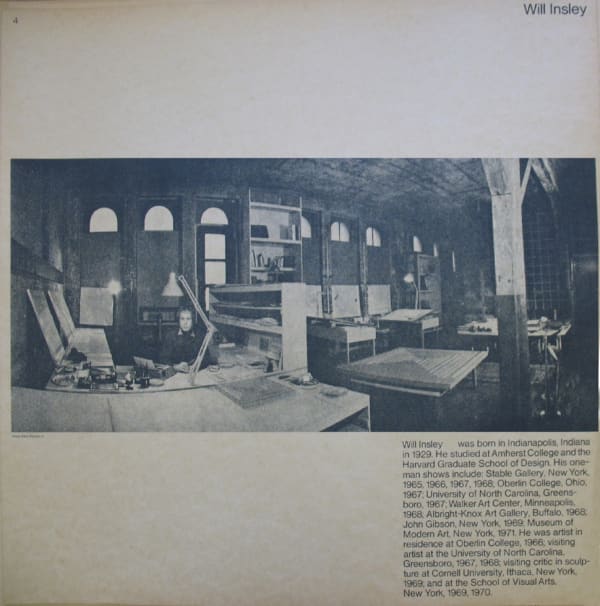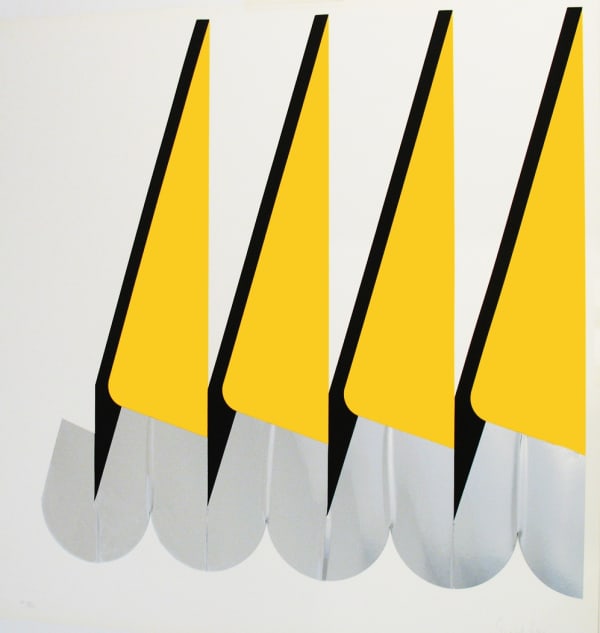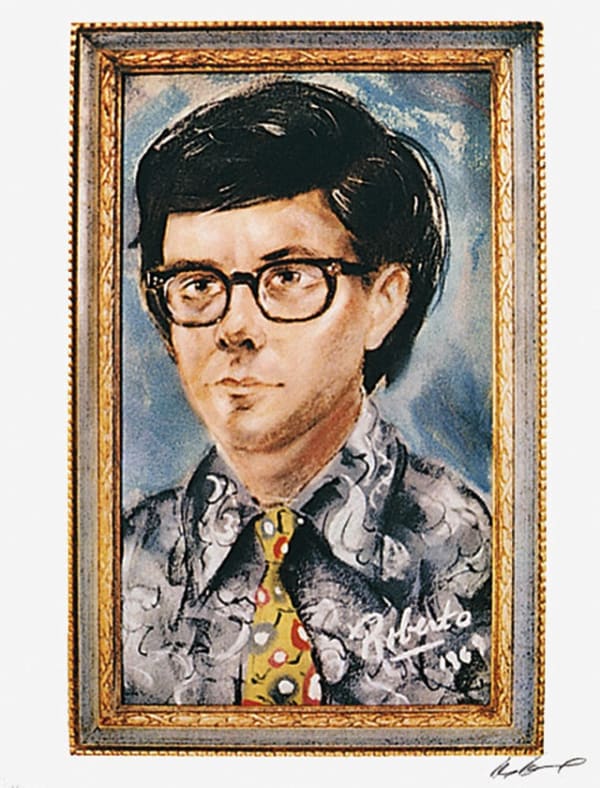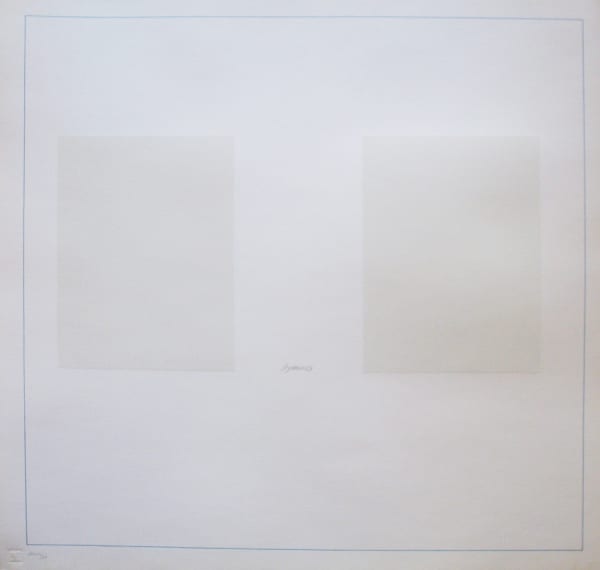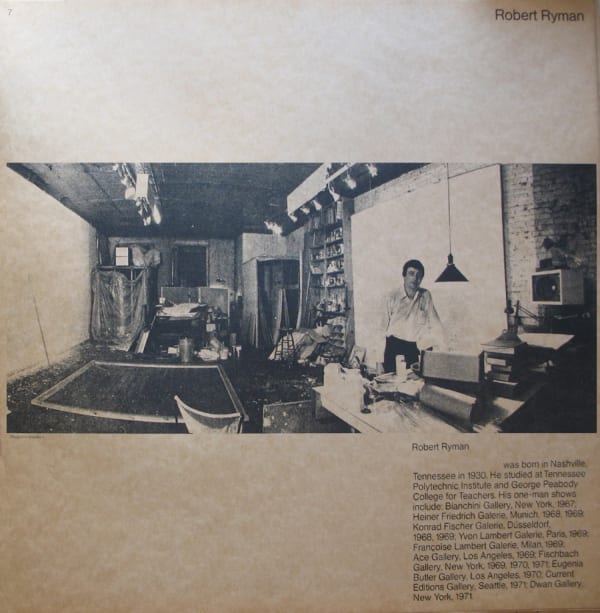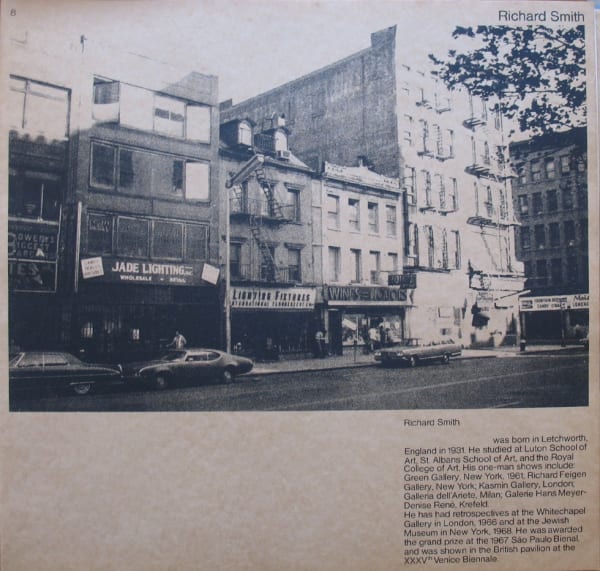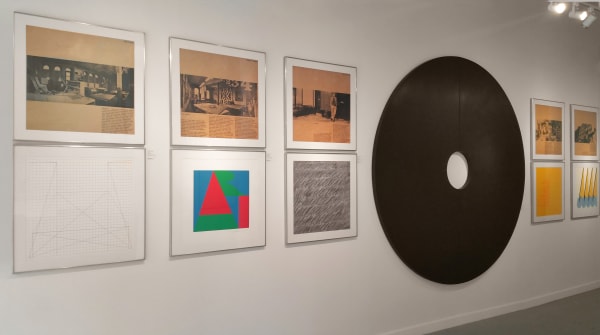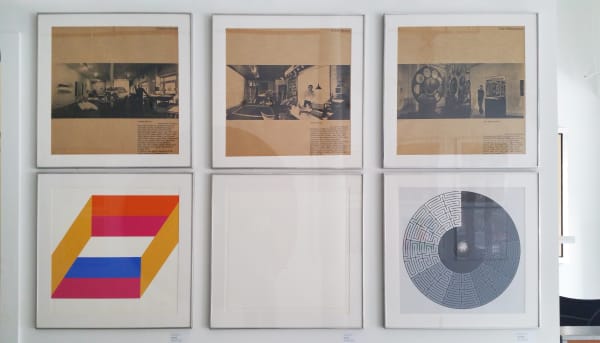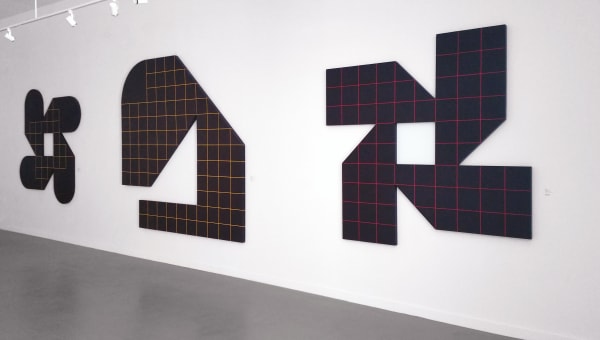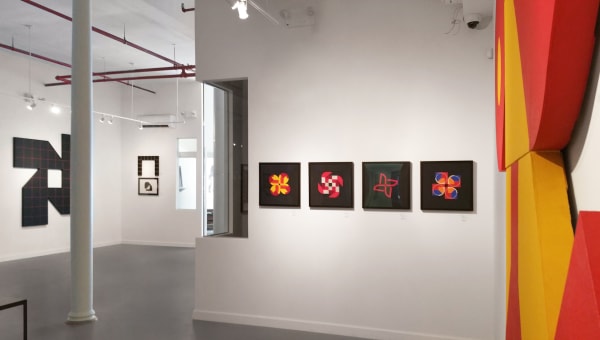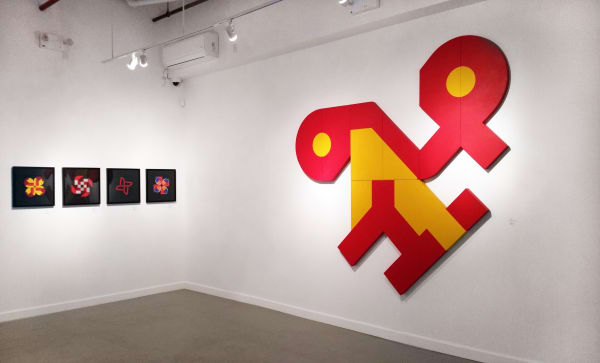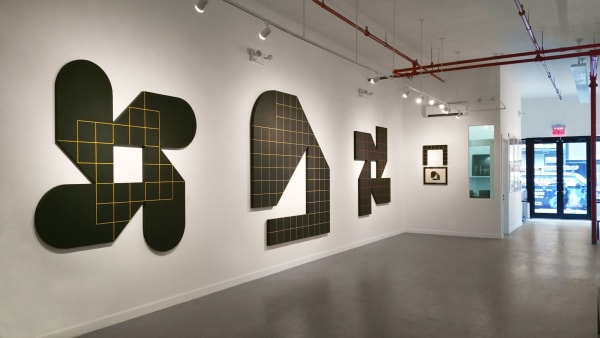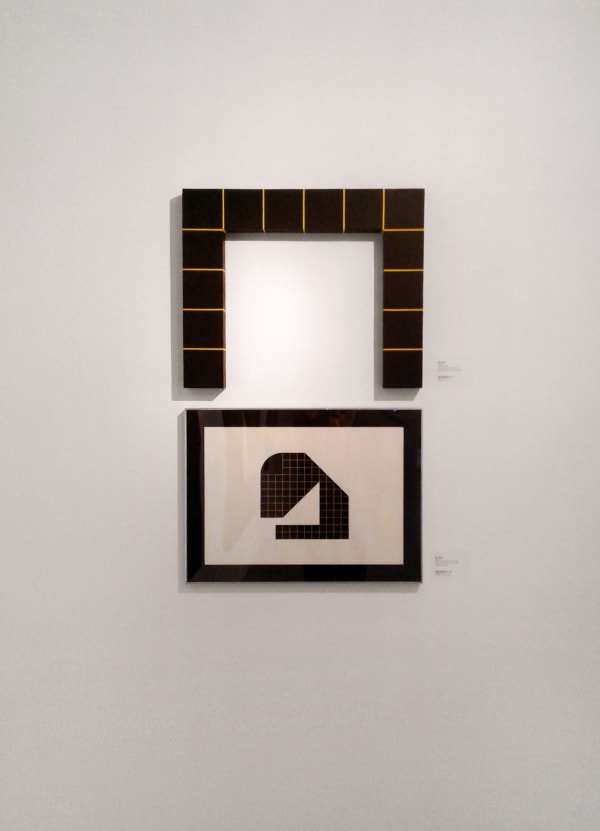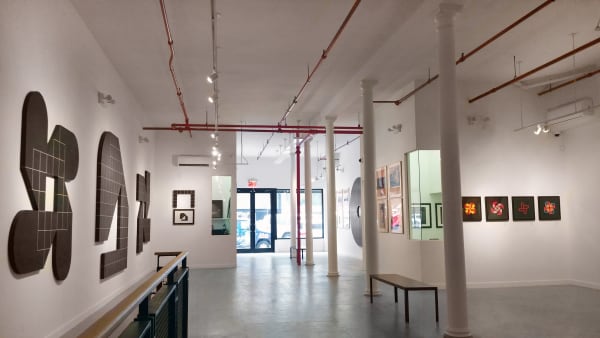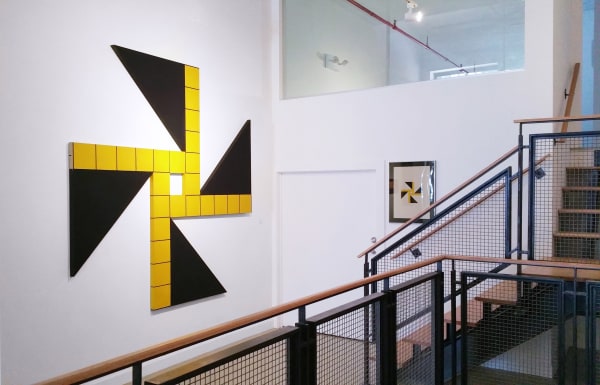Will Insley: Foundations of ONECITY
WESTWOOD GALLERY NYC announces the relocation and opening of its new Bowery space at 262 Bowery. Founded in 1995 by James Cavello and Margarite Almeida, Westwood Gallery NYC continues its focus on contemporary artists, rediscovered estates, photography, and secondary market works, with a curatorial emphasis on the Bowery Arts District.
This inaugural exhibition features six large-scale modular paintings and maquette collages by Will Insley from the 1960s, early studies for his lifelong ONECITY project. Also on view is Artists on the Bowery (1971), a portfolio of silkscreens and biographical prints by ten artists active in the Bowery community, including Cy Twombly, Robert Indiana, Robert Ryman, Charles Hinman, Les Levine, Gerald Laing, Richard Smith, John Giorno, and John Willenbecher.
-
 Will Insley, Wall Fragment No. 67.7, Ring, 1967
Will Insley, Wall Fragment No. 67.7, Ring, 1967 -
 Will Insley, Wall Fragment No. 65.12, Wall of Desire, 1965
Will Insley, Wall Fragment No. 65.12, Wall of Desire, 1965 -
 Will Insley, Wall Fragment No, 66.4, 1966-7
Will Insley, Wall Fragment No, 66.4, 1966-7 -
 Will Insley, Wall Fragment 64.6, Wind, 1964
Will Insley, Wall Fragment 64.6, Wind, 1964
-
 Will Insley, Wall Fragment 64.A, 1964
Will Insley, Wall Fragment 64.A, 1964 -
 Will Insley, Structural Model #08, early 1960s
Will Insley, Structural Model #08, early 1960s -
 Will Insley, Structural Model #01, early 1960s
Will Insley, Structural Model #01, early 1960s -
 Will Insley, Structural Model #05, early 1960s
Will Insley, Structural Model #05, early 1960s
-
 Will Insley, Structural Model #02, early 1960s
Will Insley, Structural Model #02, early 1960s -
 Will Insley, Ruler 68.4, 1968
Will Insley, Ruler 68.4, 1968 -
 Will Insley, Study of Wall Fragment No. 66.4, 1964
Will Insley, Study of Wall Fragment No. 66.4, 1964 -
 Will Insley, Study for Wall Fragments No. 66.4, 1964
Will Insley, Study for Wall Fragments No. 66.4, 1964
-
 Cy Twombly, On the Bowery, 1969-71
Cy Twombly, On the Bowery, 1969-71 -
 Eliot Elisofon, Cy Twombly on the Bowery, 1971
Eliot Elisofon, Cy Twombly on the Bowery, 1971 -
 John Giorno, On the Bowery, 1971
John Giorno, On the Bowery, 1971 -
 Eliot Elisonofon, John Giorno in his studio, 1971
Eliot Elisonofon, John Giorno in his studio, 1971
-
 Charles Hinman, One the Bowery, 1971
Charles Hinman, One the Bowery, 1971 -
 Eliot Elisofon, Charles Hinman in his studio, 1971
Eliot Elisofon, Charles Hinman in his studio, 1971 -
 Robert Indiana, One the Bowery, 1971
Robert Indiana, One the Bowery, 1971 -
 Eliot Elisofon, Robert Indiana in his studio, 1971
Eliot Elisofon, Robert Indiana in his studio, 1971
-
 Will Insley, On the Bowery, 1971
Will Insley, On the Bowery, 1971 -
 Eliot Elisofon, Will Insley in his studio, 1971
Eliot Elisofon, Will Insley in his studio, 1971 -
 Gerlad Laing, On the Bowery, 1971
Gerlad Laing, On the Bowery, 1971 -
 Eliot Elisofon, Gerald Laing on the Bowery, 1971
Eliot Elisofon, Gerald Laing on the Bowery, 1971
-
 Will Insley: Foundations of ONECITY | Installation View
Will Insley: Foundations of ONECITY | Installation View -
 Will Insley: Foundations of ONECITY | Installation View
Will Insley: Foundations of ONECITY | Installation View -
 Will Insley: Foundations of ONECITY | Installation View
Will Insley: Foundations of ONECITY | Installation View -
 Will Insley: Foundations of ONECITY | Installation View
Will Insley: Foundations of ONECITY | Installation View -
 Will Insley: Foundations of ONECITY | Installation View
Will Insley: Foundations of ONECITY | Installation View -
 Will Insley: Foundations of ONECITY | Installation View
Will Insley: Foundations of ONECITY | Installation View -
 Will Insley: Foundations of ONECITY | Installation View
Will Insley: Foundations of ONECITY | Installation View -
 Will Insley: Foundations of ONECITY | Installation View
Will Insley: Foundations of ONECITY | Installation View -
 Will Insley: Foundations of ONECITY | Installation View
Will Insley: Foundations of ONECITY | Installation View -
 Will Insley: Foundations of ONECITY | Installation View
Will Insley: Foundations of ONECITY | Installation View -
 Will Insley: Foundations of ONECITY | Installation View
Will Insley: Foundations of ONECITY | Installation View
WESTWOOD GALLERY NYC was pleased to announce the relocation and launch of their new gallery at 262 Bowery. Established in 1995 by co-owners James Cavello and Margarite Almeida, WESTWOOD GALLERY NYC focuses on a contemporary program of artists, including rediscovered artist estates, current artist projects, secondary market and photography. WESTWOOD GALLERY NYC will present a series of exhibitions dedicated to artists in the Bowery Arts District, past and present.
The exhibition included six large-scale modular paintings from the 1960s, as well as smaller maquette collaged paintings, foreshadowing Will Insley’s life-long ONECITY project. Also presented is an exhibition of “Artists on the Bowery”, a portfolio edition from 1971 with ten silkscreen prints and ten biographical prints of artists who lived and worked in the Bowery artist community of its time. Along with Will Insley, these artists include Cy Twombly, Robert Indiana, Robert Ryman, Charles Hinman, John Giorno, Richard Smith, Les Levine, Gerald Laing and John Willenbecher.
Will Insley (1929-2011) created a 50 year artwork legacy entitled ONECITY. A merger of abstraction and architecture ONECITY is a massive 675 mile square labyrinthine imaginary city located in the center of the United States, housing 400 million people. In the 1950s, after graduating with a degree in architecture from Harvard Graduate School of Design, Insley never built a building, but began his art career with an exploration in various media. In the 1960s he formulated grid and modular geometric paintings focused on the inner field and diagrammatic shaped paintings. In the 1970s and 80s he created detailed pencil drawings of ONECITY buildings and defined the city outline on a map of the U.S. He added photomontages to provide a view of building depth and dimension with tiny figures for scale as well as a large scale model of ONECITY. Into the 1990s Insley’s paintings of ‘Wall Fragments,’ with intersecting mathematical lines, depicted fragments from ONECITY “to imply the greater, but present the lesser which could fit within an indoor space.” During these years he typed free flowing ideas about ONECITY, often positioning his typewritten text into constructed patterns.
Insley’s desire was to challenge and investigate the principles of architecture, civilization, social order, ideas, abstraction, even artistic beauty. He also wanted to leave perception to the viewer, especially with his ‘abstract’ buildings, which convolve reality and non-reality. The societal order of ONECITY addresses the light and dark aspects of humanity through Insley’s interpretation of its citizens’ daily lives.
Will Insley’s works are included in the collections of numerous museums along with solo exhibitions at the Guggenheim Museum NY (1984), the Chicago Museum of Contemporary Art (1976) and the Museum of Modern Art NY (1971) and were included in documenta Kassel 5 and 6 (1972 and 1977). Many collectors and artists are intrigued with Insley’s work, such as the late Sol LeWitt who acquired Insley’s work for his own collection (recently exhibited at The Drawing Center, NYC). Insley’s influences include Robert Smithson, Étienne-Louis Boullée, Frank Stella, and other artists and architects. Over the decades his galleries have included Stable, Fishbach and Protetch. Insley also taught at School of Visual Arts for over 30 years.
In his late 70s, after 15 years without representation, Will Insley reached out to WESTWOOD GALLERY NYC. Since then, the Gallery has acquired the artist’s estate and continues to catalog, preserve and exhibit his art. Acquisitions from the collection support these activities, which include plans to publish his writings and further explore ONECITY in books and film.
The portfolio, “On the Bowery,” exhibited in conjunction with Will Insley's works, consists of ten silkscreens by the representative artists of the period who had studios in the vibrant downtown community. The exhibition showcases each artwork in relation to the artist photographed in his working environment, thus recapturing creative atmosphere that characterized the Bowery as a cultural milestone of the New York School. Artists include Cy Twombly, Robert Ryman, Will Insley, Robert Indiana, Les Levine, John Willenbecher, Charles Hinman, Richard Smith, Gerald Laing, and John Giorno. All artworks were created in the period 1964-71, and the biographical prints photographed by Eliot Elisofon (1911-1973), who lived on the Bowery and was a founding member of the Photo League in 1936 highlight each artist in his working environment, the Bowery studio.
The portfolio also highlights the history of the Bowery Arts District, an area where from the 1950s artists created their artwork. In the essay from the portfolio, William Katz highlights the history of the area: “There is no sense of an ‘artists’ community‘ but artists have been attracted by the area for twenty years. In the late 40’s and 50’s Clyfford Still, Mark Rothko, Léger and Dubuffet, among others, had studios on the Bowery, and deKooning, Franz Kline and Reginald Marsh worked nearby. In the early 60’s, Louise Nevelson took a place on Mott Street just off the Bowery and was joined not long after by other artists attracted by the lofts for reasonable rents and the relaxed, small-time quality of the area.” As New York artists gravitated to this area where they could obtain more space for a lower cost, they became integral in defining the neighborhood as cultural center.

